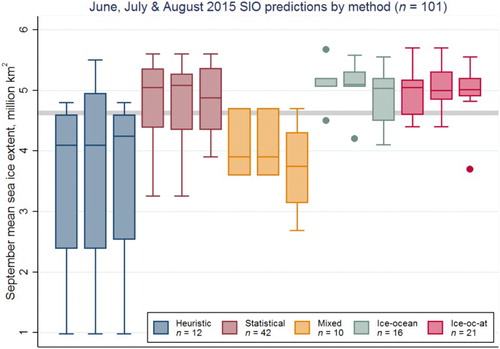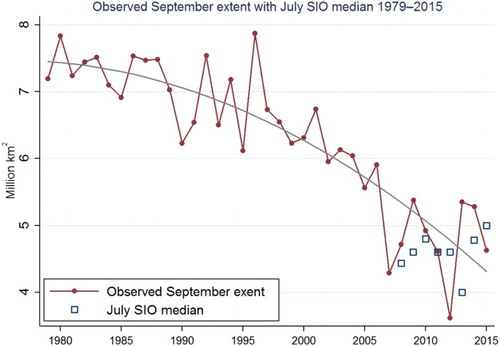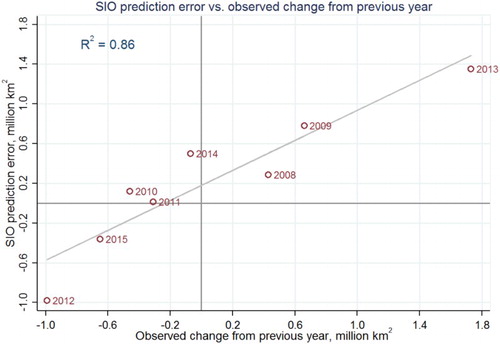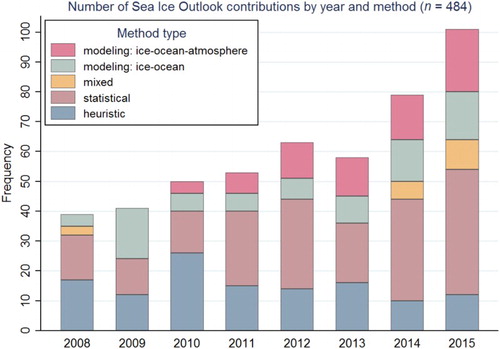Figures & data
Figure 2. SIO June, July and August 2015 predictions for September mean sea ice extent. Box plots indicate the median, IQR and outliers for each distribution.

Figure 3. Observed September extent shown with quadratic trend and median of July SIO predictions, 1979–2015.

Figure 4. Observed September extent compared with median and IQR of July SIO predictions, 2008–2015.

Figure 5. SIO prediction error (median July SIO minus observed September extent) versus observed change from September the previous year, 2008–2015.


